Nth Symposium: VAR Goes All Out For Enterprise CIO Event
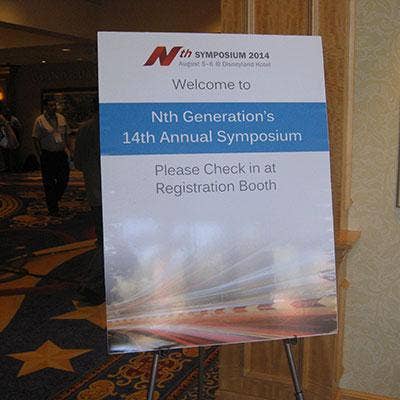
Welcome To The Nth Symposium
While Nth Generation Computing held its annual Nth Symposium in the halls of the Disneyland Hotel, the event was no Mickey Mouse affair.
Instead, the San Diego-based solution provider managed to pack almost as much information -- and as many top Hewlett-Packard and other executives -- as attendees to any large industry event like HP Discover or VMworld as one might expect.
Well over 200 attendees from clients and potential clients of Nth were treated to presentations from HP's CTO and CIO, the executive leaders of various HP product lines, and executives from other vendors, including VMware and Intel.
CRN was there, too. Turn the page to visit the Nth Symposium and see just how big a small VAR can go.
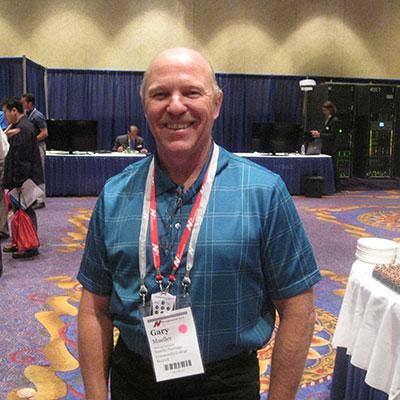
From 'Freeloader' To Customer
This year marked the 10th time Gary Mueller, network specialist at Santa Ana, Calif.-based Rancho Santiago Community College, has attended the Nth Symposium. But Mueller did not always attend as a customer.
"For my first five years, my boss liked another VAR," Mueller told CRN. "But I talked to several people here over the years. Nth's level of expertise impressed me so much I was able to sell it to my boss, and we signed with Nth."
Mueller said he used to feel like a freeloader at the event. "But I not only talked to Nth employees, I also talked to other clients," he said. "Everyone was happy with what Nth has done."
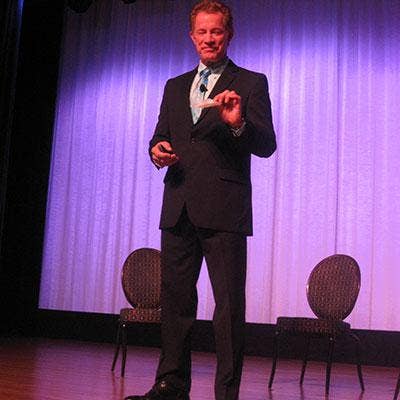
Slimming Down
Serving as emcee for the event, as he has since 2000, was John Randall, an executive marketing consultant who works with several solution providers on their marketing strategy.
Randall opened the Nth Symposium by warming up the audience with a preview of what they could expect from the event. He closed his introduction by showing the audience the trifold brochure that replaced the huge folder that attendees usually received, and said the event was "going green" for 2014.
"Hopefully, we're slimming down in many ways," he said, while patting his stomach.
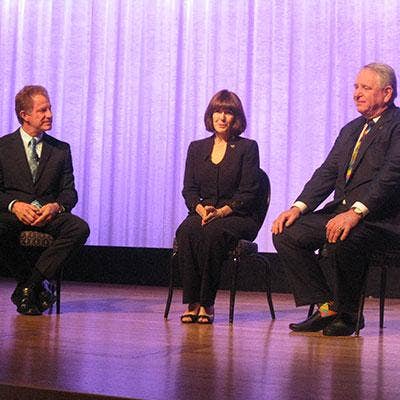
Hosts Rich And Jan Baldwin
Randall brought to the stage the hosts of the Nth Symposium, Nth Generation CIO and Chief Strategy Officer Rich Baldwin (right) and CEO Jan Baldwin (center).
Rich Baldwin said the Nth Symposium is successful because of the information presented and the training it provides attendees. "I have customers tell me this is the only opportunity for them to get out of the office to get training," he said.
Jan Baldwin said holding the event in the shadow of Disneyland was also a big factor in its success. "Most of our customers are in Southern California, within driving distance of here," she said. "So why not have this event in the 'Happiest Place on Earth?'"
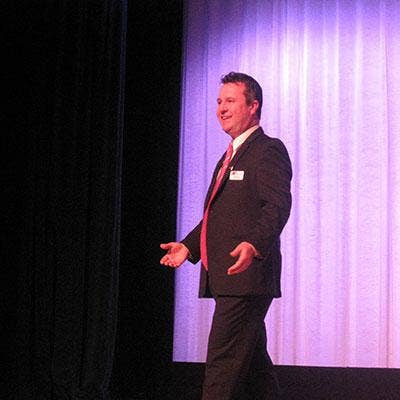
The Megatrends
Nth Generation CTO Dan Molina discussed five IT megatrends, which he defined as changes in IT that will last at least a decade.
The first, social media, means enormous sums of data are being generated by today's estimated 1.8 billion active Facebook users and 271 million Twitter users, and the expected 2 billion total social media users expected next year. "All those users, all that data, is a big market opportunity," Molina said.
Other megatrends include mobility, big data, and the cloud, the latter of which is still being driven in large part by employees with credit cards who increase their employers' risk of compliance, privacy and security issues.
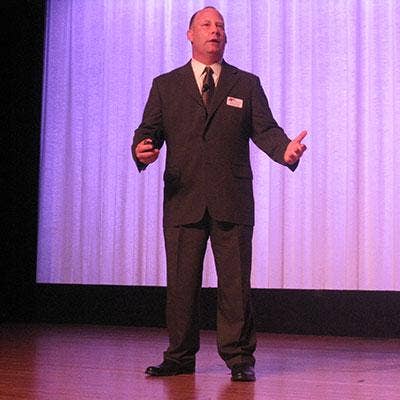
Nth Subject Expert: Big Data
Jerome Jackson, Nth's director of security and analytics, introduced the audience to HAVEn, which is HP-speak for Hadoop, Autonomy, Vertica, enterprise security and "n" number of applications.
Actually, Jackson said, the "n" really stands for Nth.
The primary use cases for those big data applications include predictive analytics, health-care analytics, using social media to understand customer perceptions and surveillance, Jackson said.
Surveillance is not just security, he said. "Retail companies are interested in looking at your cellphone and know what you are buying," he said.
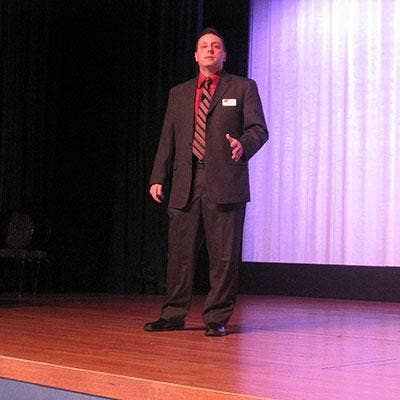
Nth Subject Expert: Security
Jerry Craft, Nth's senior security and networking consultant, said his company can offer customers security assessments and testing to "find holes before the bad guys do."
Craft said the biggest security pitfalls a business faces include easily forgotten systems and compromised servers, missing security updates and a lack of formal security plans. "We can help you build a one- to three-year plan, and build a budget for it," he said.
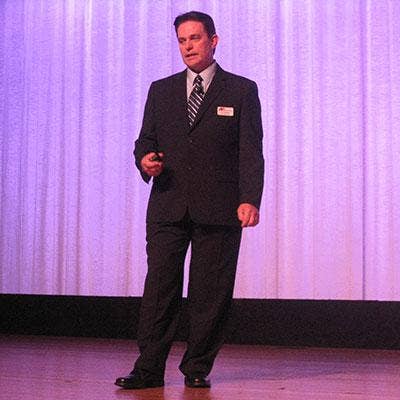
Nth Subject Expert: Converged Infrastructure
Jim Westover, Nth's senior solutions architect, talked about the importance of converged infrastructure as a way to bring together the latest server and storage advances. "Convergence is where it's all going," he said.
Westover also introduced HP's newest ConvergedSystem 700 and ConvergedSystem 700x converged infrastructure solutions, as well as Nth's expertise, in helping customers take advantage of the OpenStack cloud technology offered by HP.
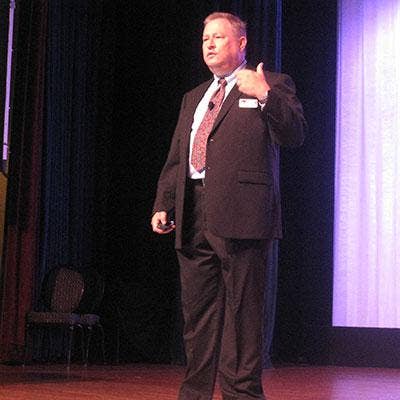
Nth Subject Expert: Data Protection
Richard Tengdin, enterprise solutions architect at Nth, said that data growth and the need to protect the increasing number of mobile devices used in the enterprise is having a big impact on the need for data protection, which is not always at the top of users' minds.
"We are a victim of our success," Tengdin said. "If it works, no one notices it."
New backup solutions that offer the same performance of SQL servers sold three years ago are a necessity, Tengdin said. "You can write a check and get more storage," he said. "But nobody gave us another four hours to back up another 12 TBs."
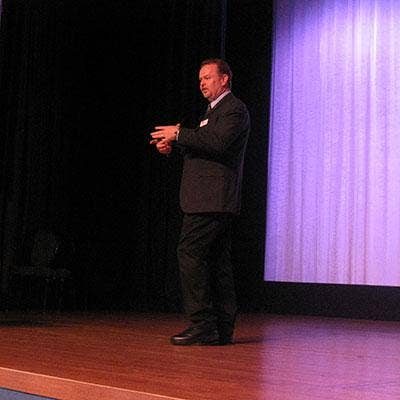
Nth Subject Expert: Storage And Virtualized Environments
Storage in virtualized environments has traditionally not kept up with customer requirements for performance, accessibility and reliability, said Jim Russ, vice president of enterprise technology at Nth.
"When customers scale to 50, 60, 70 virtual machines per server, they can't keep up with demand," Russ said.
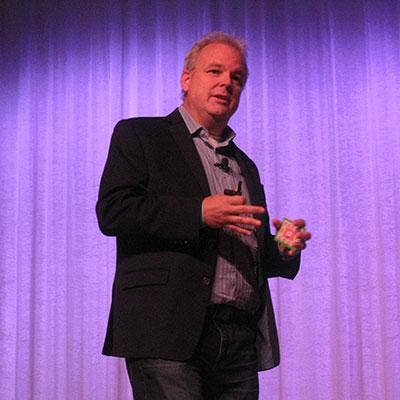
HP CTO Fink: OpenStack The Future Of The Cloud
HP CTO Martin Fink used his keynote presentation to outline his vision for data center infrastructures based on clouds that automatically scale, automatically repair themselves and offer fault tolerance. And with enterprises heavily relying on open source technology, it is only natural to choose OpenStack for cloud development, Fink said.
HP's new OpenStack-based Helion cloud provides open source benefits with the full support of HP and its partners, Fink said. "The idea of saying, 'Hey, Mr. Customer, you can go to openstack.org and download the requirements, and, 'Hey, you can deploy it yourself' is not a very good conversation starter," he said.
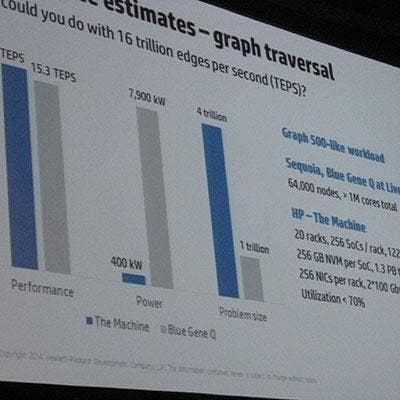
Introducing 'The Machine'"
Fink also introduced "The Machine," a new way of building computers being developed by HP that will feature photonic instead of electrical connections between components, as well as the ability to move ions instead of electrons to scale storage.
The Machine will get rid of the distinction between memory, I/O and storage by collapsing flash storage, DRAM and SRAM into a single memory pool using memristor universal memory technology. That also will require the development of new operating systems that no longer need to shuffle data between different types of memory, which can consume up to 80 percent of a computer's operation, Fink said.
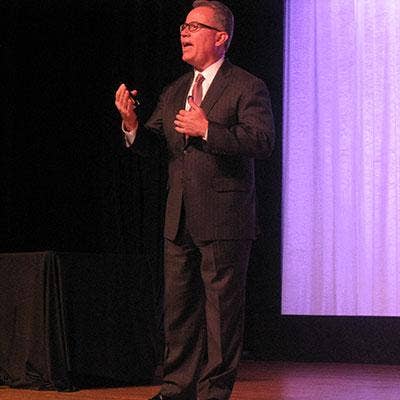
HP CIO Baez Tells Peers Their Challenges Will Never Go Away
The job of a CIO, never easy to begin with, will only get more complex over time, said Ramon Baez, HP's senior vice president and global CIO.
Baez cited analyst estimates that by 2020, about 8 billion people will be using 30 billion devices and 10 million mobile apps and generating 40 trillion gigabytes of data.
That will put a lot of pressures on CIOs, Baez said. "The No. 1 job of the CIO is to make the complex simple," he said. "But I've been in a lot of IT organizations where the opposite happens. We make the simple complex. And that hurts."
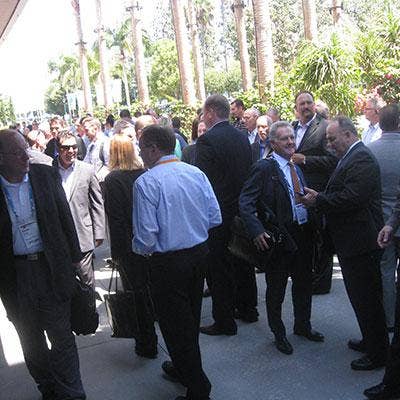
Baez Keynote Sets Fire, Sort Of
Baez's keynote was cut short by an accidental fire alarm that sent attendees of the Nth Symposium rushing for the exit instead of heading for the expected buffet lunch in the event's Solutions Showcase.
"Is that it? What a way to tell us it's lunch time," Baez said as the alarm was ringing.
Your intrepid reporter overheard one HP employee in a hallway tell Baez, "Haven't you heard? We're going to tell people your speech was on fire. You were hot!"
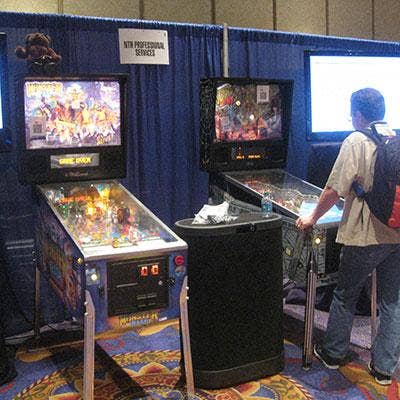
Fun And Games In The Solution Showcase
Nth Generation arranged for lunch in the Solutions Showcase, which is unusual because much of the equipment installed there came from the solution provider's own laboratory, where eating is most likely strictly prohibited.
For those who either felt strange eating around expensive servers and storage equipment, or who more likely were either bored or tired of waiting for food, a couple of old-school pinball machines provided a fun distraction.
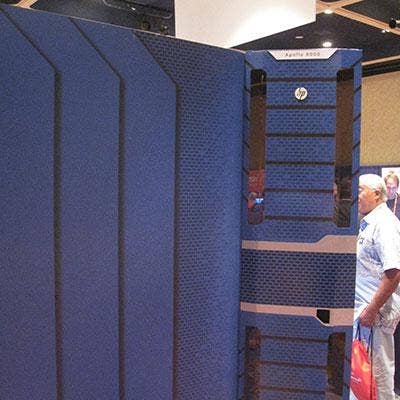
The Biggest, Baddest Box?
Walking the Solutions Showcase, one's eyes naturally gravitated to the biggest box on the floor.
As your intrepid reporter closed in on the big blue box, it became obvious that this was something completely new from HP.
What was it? …
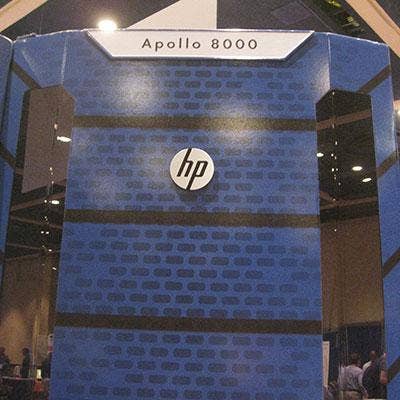
Apollo 8000
That's what it was. HP's newly introduced Apollo 8000, which the company called the first 100 percent water-cooled supercomputer, which overcomes the design difficulties and risks of potential water damage to drive big savings in power and cooling.
The Apollo 8000 is built on a scalable rack design with up to 144 servers per rack to provide four times the teraflops per rack compared to air-cooled designs, HP said. Customers can recycle the warm water used to cool the system as a heat source for their facilities.
But was this really the Apollo 8000? …
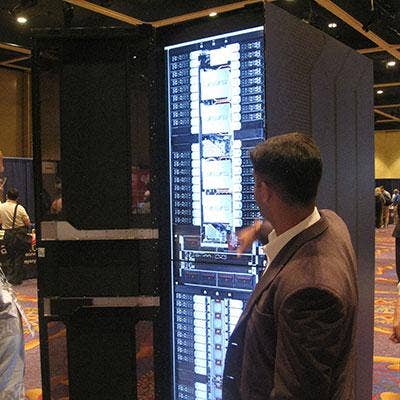
Surprise! No Apollo 8000
Actually, it turned out to be a big empty box with a couple of lights that shined through a Plexiglas mockup of a server. No flashing lights. No beeps or buzzes. No work being done. Just a big light.
A close inspection of the Apollo 8000 enclosure showed it to be a box that was, in part, covered with foam board to make it look like an Apollo 8000 enclosure.
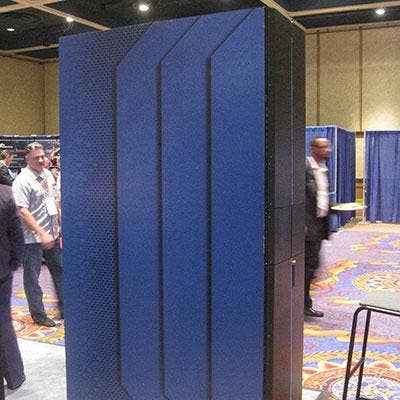
The Final Clue It Was Not An Apollo 8000
For those who refused to accept the idea that HP might send a mere mockup of its upcoming water-cooled supercomputer to a CIO event, a look at the back showed only a single power cable snaking inside to power the lights instead of the dozens of cables a real supercomputer would have.
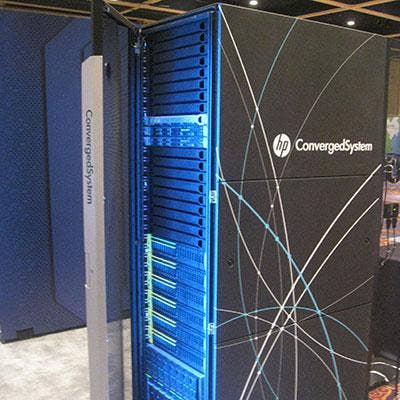
The ConvergedSystem Was Real, 'Tho
The second-biggest box in the Solutions Showcase turned out to be a very real HP ConvergedSystem converged infrastructure solution.
HP's ConvergedSystem competes with integrated solutions from VCE, Dell, Oracle and IBM, as well as with reference architectures, including the joint EMC/Cisco VSPEX and joint NetApp/Cisco FlexPod.
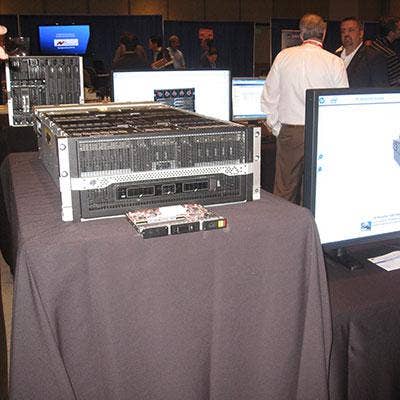
Moonshot
HP's Moonshot modular server solution, while not as hot as it was at last year's Nth Symposium when it was still a relatively new item, was nevertheless displayed at the Solutions Showcase.
The display showed the variety of server modules that can be mixed-and-matched in the Moonshot chassis.
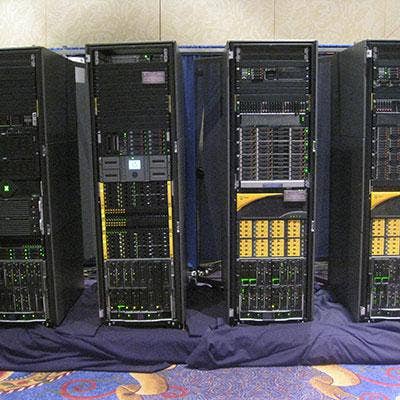
Nth Migrates Data Center To The Solutions Showcase
To prepare for the Nth Summit, Nth Generation trucked its entire lab to the event. That included HP servers, 3PAR and StoreOnce storage, and VMware and Hyper-V technologies, with operations replicated to Nth's Irvine, Calif.-based branch office.
When asked how much it cost to move the lab to the Disneyland Hotel, Lee Solomonson, Nth's lab manager, told CRN, "I'm salary, so it's free."
Actually, for Nth, the cost of moving the lab is quite low. Baldwin later told CRN that the company owns its own big-rig truck that it uses to deliver preconfigured solutions directly to its customers, in addition to moving the lab equipment to Disneyland.
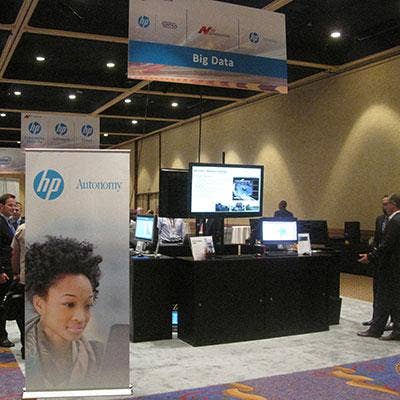
Big Data A Big Attraction
HP's big data booth drew a lot of attention, and not only because it was the first booth one saw when entering the Solutions Showcase. The booth highlighted HP's Autonomy and Vertica solutions, but the big draw were a couple of videos showing such use cases as quickly reading every license plate in a parking lot or on a busy freeway.
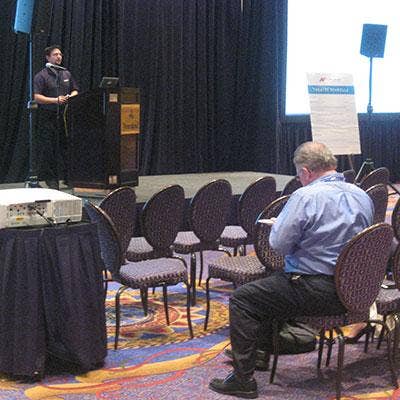
Toughest Job At The Nth Symposium
The toughest job at any conference is giving the lunchtime presentation to a crowd of hungry or busy executives.
The Nth Symposium proved to be no exception, as this representative from Baar, Switzerland-based data protection vendor Veeam found out. At one point, his audience numbered six people, five of whom were talking to each other.
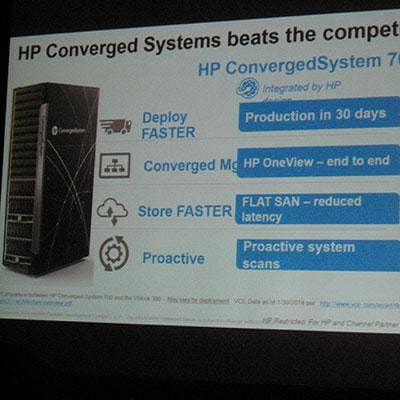
HP Converged Systems vs. The World
Todd Hatfield, HP's data center interoperability architect, held a session comparing HP's ConvergedSystem converged infrastructure solutions to VCE's Vblock, IBM's Pure, the VSPEX and FlexPod reference architectures, and others.
Support is a major differentiation, Hatfield said. He said that HP, as the sole developer of the ConvergedSystem solution, presented a single point of support for customers.
Hatfield called VCE a consortium of four companies who had to come together to provide a layer of proactive support, and called EMC and Cisco "frenemies," who might not be as cooperative in the future. "[HP owns] the product," he said. "You call us. We solve the problem."
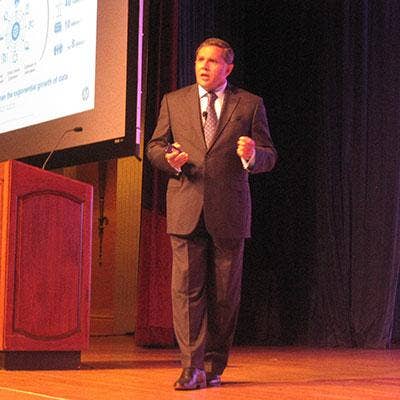
Big Data And HP
Rohit de Souza, vice president of HP's Autonomy business, told CIOs not to underestimate big data's power. "If you combine information from social media with your CRM, you get an understanding of the cause of how people view your company," de Souza said.
HP's Autonomy manages big data with such services as compliance and eDiscovery where it is stored, de Souza said. "In today's business, it's not practical to move petabytes, yottabytes, brontobytes, or whatever we're talking about," he said.
Autonomy manages contextual information well, de Souza said. "Dealing with data on its own has little value," he said. "But in context around the word, you can get much more granular information."
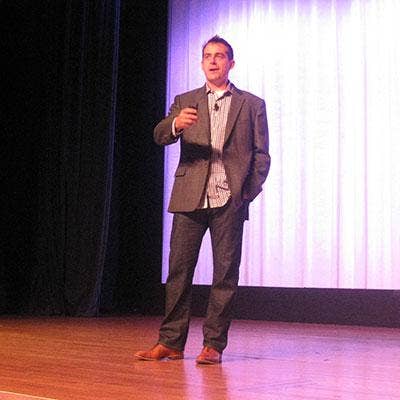
Serious Gaming With Big Data
Portman Wills, chief data scientist for the Game Show Network, which develops both television game shows and online games, said big data has become key to his company's success.
As an example, he cited the online game "Wheel of Fortune," which is played similarly to the television show of the same name. That game has 10,000 different puzzles, and the Game Show Network knew the "Things" category was more popular than Cculture, Food, People, or others. Big data showed the reason: The "Things" category puzzles are the shortest.
"So now when you go to the site, you'll first see short puzzles like 'bird' or 'car,'" he said.
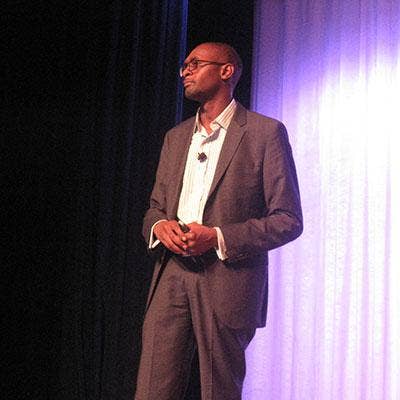
Security Getting Ever More Complex
Securing a business' assets is getting more challenging, as stealing information has become a big business, said Albert Biketi, general manager for HP's enterprise security products.
Stealing data also has become a disciplined business, with those who break into a company now going through a cycle of research, infiltration, discovery of useful data, capturing the data and exfiltration of the data, Biketi said.
For example, someone may send an email to a company's CEO with an attachment that includes malware, knowing that the CEO will probably pass it on to someone else to handle. That someone else, knowing the email came from the CEO, might likely open the attachment and start the security breach, Biketi said.
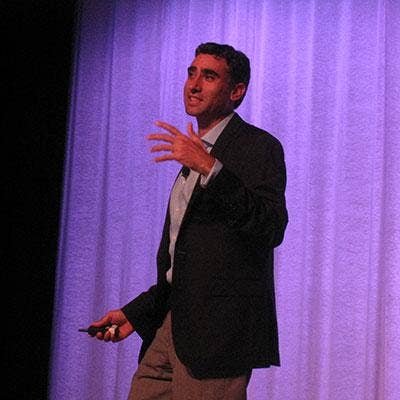
The Security Of Software-Defined Networking
VMware Networking CTO and software-defined networking pioneer Martin Casado said that even though virtualized networking can decrease network provisioning times while reducing capital and operating expenses, the surprising big driver has turned out to be security.
Casado said that while about 80 percent of security resources are spent on network perimeter protection, once someone gets in, they have unfettered access to everything. Protecting each application, on the other hand, is expensive in terms of up-front and ongoing costs, he said.
Network virtualization solves that problem. "You can build a 10-terabit firewall, and distribute it to every application. ... If an application gets attacked, the attack is limited to that application," he said.
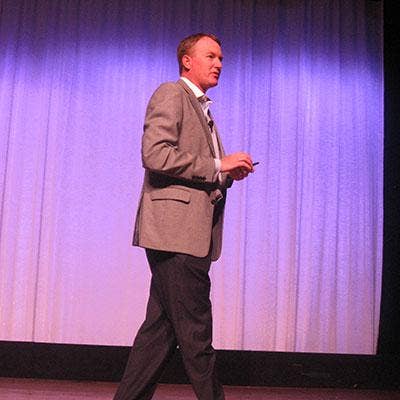
Software The Future Of The Data Center
While data center resources are still being manually deployed, the future will belong to software-defined architectures that allow resources to be automatically deployed with all the required policies, said Shannon Poulin, Intel vice president and the general manager of Intel's Datacenter Group.
Intel is doing its part by developing technology to give data centers the ability to handle software-defined resources while still working with legacy workloads, Poulin said.
That will require developing a new orchestration layer to ensure workloads automatically land on the appropriate hardware.
"The reality is, as long as the orchestration is aware of it, it will land on the hardware with the appropriate performance," he said.